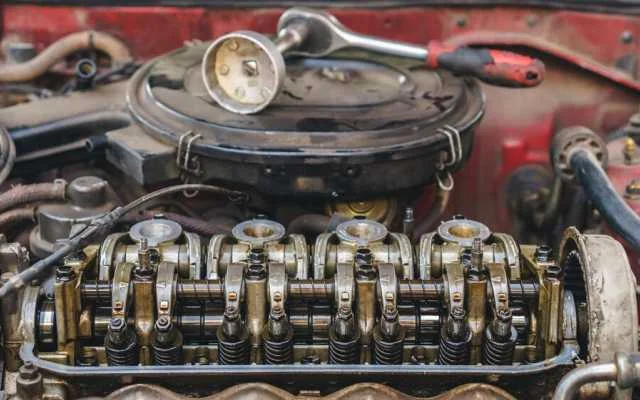What is DOHC?
DOHC, or Double Over Head Camshaft, refers to an engine configuration where there are two camshafts per cylinder bank. This setup allows for precise control over the engine's valves, as each camshaft is responsible for operating either the intake or exhaust valves. By having separate camshafts for intake and exhaust, DOHC engines can optimize valve timing and improve overall engine performance.
Difference between DOHC and SOHC
The primary difference between DOHC and SOHC lies in the number of camshafts used in the engine. DOHC engines feature two camshafts per cylinder bank, whereas SOHC engines utilize only one camshaft per cylinder bank.
DOHC Function
In a DOHC engine, each camshaft is responsible for operating either the intake or exhaust valves. This dual-cam setup allows for precise control over valve timing and ensures efficient engine operation. By independently controlling the intake and exhaust valves, DOHC engines can optimize performance across different engine speeds and loads.
SOHC Function
SOHC, or Single Over Head Camshaft, engines utilize a single camshaft per cylinder bank to operate both the intake and exhaust valves. While this configuration is simpler than DOHC, it may result in less precise valve timing control compared to DOHC engines. However, SOHC engines are often more compact and cost-effective to manufacture.
Advantages and Disadvantages of DOHC
Advantages:
- Precise valve timing control
- Enhanced engine performance
- Improved fuel efficiency
- Higher revving capability
Disadvantages:
- Complex design
- Increased manufacturing costs
- Greater maintenance requirements
SOHC Advantages and Weaknesses
Advantages:
- Simplified design
- Lower manufacturing costs
- Reduced maintenance requirements
Weaknesses:
- Limited valve timing control
- Potential performance trade-offs
How a DOHC Engine Works
In a DOHC engine, the two camshafts per cylinder bank are driven by the engine's timing belt or chain. Each camshaft is precisely timed to open and close the intake and exhaust valves at the optimal moment, maximizing engine efficiency and power output. This intricate valve control system allows DOHC engines to deliver superior performance across a wide range of driving conditions.
How a SOHC Engine Works
In a SOHC engine, a single camshaft per cylinder bank is responsible for operating both the intake and exhaust valves. While this setup is simpler than DOHC, it may result in less precise valve timing control. However, modern SOHC engines often incorporate technologies such as variable valve timing (VVT) to enhance performance and efficiency.
Questions About DOHC
Are DOHC Engines More Powerful than SOHC Engines?
The power output of an engine depends on various factors, including its design, displacement, and tuning. While DOHC engines generally offer more precise valve timing control, which can contribute to improved performance, it doesn't necessarily mean they are inherently more powerful than SOHC engines. Other factors, such as engine displacement, turbocharging, and fuel injection systems, also play significant roles in determining an engine's power output. Ultimately, whether a DOHC engine is more powerful than a SOHC engine depends on the specific design and tuning of each engine.
What are the maintenance requirements for a DOHC engine?
Maintaining a DOHC engine involves several key tasks to ensure optimal performance and longevity. Some common maintenance requirements for DOHC engines include:
- Regular Oil Changes: Changing the engine oil and oil filter at recommended intervals helps keep the engine lubricated and reduces wear on internal components.
- Timing Belt or Chain Replacement: DOHC engines often use timing belts or chains to synchronize the rotation of the camshafts with the crankshaft. It's essential to replace these belts or chains according to the manufacturer's recommendations to prevent potential engine damage due to timing belt failure.
- Valve Adjustment: DOHC engines may require periodic valve adjustments to maintain proper valve clearance and ensure optimal engine performance. This task typically involves measuring and adjusting the clearance between the valve stems and the camshaft lobes.
- Coolant System Maintenance: Proper maintenance of the engine's cooling system, including regular coolant flushes and inspections of hoses and radiator, is crucial for preventing overheating and engine damage.
- Air Filter Replacement: Regular replacement of the engine air filter helps ensure proper air intake and combustion, improving fuel efficiency and engine performance.
By staying vigilant with these maintenance tasks, DOHC engine owners can help prolong the life of their engines and minimize the risk of costly repairs.
Can SOHC Engines Be Modified for Better Performance?
Yes, SOHC engines can be modified to improve performance, much like their DOHC counterparts. Some common modifications for enhancing the performance of SOHC engines include:
- Performance Tuning: Engine tuning using aftermarket engine management systems or tuning software can optimize fuel and ignition timing parameters for increased power and torque.
- Intake and Exhaust Upgrades: Upgrading the intake and exhaust systems can improve airflow into and out of the engine, increasing horsepower and torque output.
- Camshaft Upgrades: Installing aftermarket camshafts with higher lift and duration can improve valve timing control and increase engine performance.
- Forced Induction: Adding a turbocharger or supercharger to a SOHC engine can significantly increase power output by forcing more air into the combustion chambers.
- Engine Internals Upgrades: Upgrading components such as pistons, connecting rods, and cylinder heads can strengthen the engine and handle higher levels of boost or compression, resulting in improved performance.
Overall, with the right modifications and tuning, SOHC engines can be transformed into potent performers capable of delivering impressive horsepower and torque gains.
In conclusion, while both DOHC and SOHC engines have their own set of advantages and disadvantages, the choice between them ultimately depends on factors such as performance requirements, cost considerations, and design preferences. Whether you prefer the precision of a DOHC engine or the simplicity of a SOHC engine, understanding the differences between these two camshaft configurations is essential for making informed decisions about your vehicle's engine technology.

